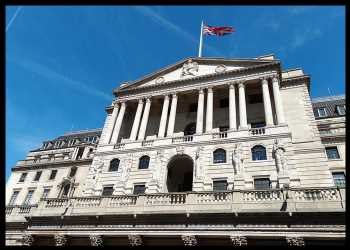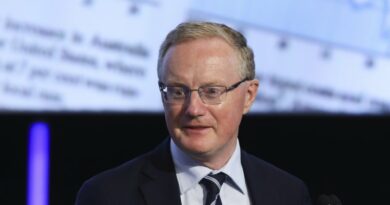Bank Of England Pauses Rate Hike Unexpectedly On Softening Inflation
In a close call, the Bank of England kept its benchmark rate unchanged unexpectedly for the first time since November 2021 as inflation eased to an 18-month low, while the economy is moving closer to a mild recession.
The BoE Monetary Policy Committee, headed by Governor Andrew Bailey, voted by a narrow margin of 5-4 to maintain the bank rate at 5.25 percent. Markets had widely expected a quarter-point hike.
The bank had tightened its policy at each and every rate-setting meeting since December 2021, when the rate stood at a modest 0.10 percent. At 5.25 percent, the interest rate is the highest since early 2008.
The decision came a day after the US Federal Reserve skipped a rate hike. The Fed left the target range for the federal funds rate unchanged at 5.25-5.5 percent, but the official projection suggested one more rate increase this year.
A week ago, the European Central Bank hiked interest rates by another 25 basis points, but signaled a pause ahead as the euro area economy slows.
Elsewhere on Thursday, the Swiss National Bank unexpectedly left interest rates unchanged and markets interpreted the rhetoric as a signal for a long pause.
Meanwhile, central banks of Sweden and Norway raised their policy rates by 25 basis points and signaled one more hike ahead.
Capital Economics’ economist Paul Dales said UK interest rates have peaked at 5.25 percent rather than the previous forecast of a peak at 5.50 percent. As core inflation is likely to fall only slowly, the bank is expected to keep the rate at their peak until late in 2024.
However, the BoE will reduce the rates quicker than the Federal Reserve and the European Central Bank, Dales added.
ING economist James Smith said ultimately the UK economy cannot sustain interest rates above 5 percent indefinitely and something closer to 3 percent is a more likely medium-term level.
Five members of the MPC judged that retaining the rate at 5.25 percent was warranted at this meeting as there were signs that the labor market was loosening. Four members voted to lift the bank rate by 25 basis points, citing evidence of more persistent inflationary pressures.
“Monetary policy would need to be sufficiently restrictive for sufficiently long to return inflation to the 2 percent target sustainably in the medium term,” the bank said.
“Further tightening in monetary policy would be required if there were evidence of more persistent inflationary pressures,” the bank added.
The pause in the rate hike is welcome news for mortgage holders. Policymakers said the clearest signs of weakness from the past policy tightening continued to be in the housing market.
The MPC also voted unanimously to reduce the stock of UK government bond purchases held for monetary policy purposes, and financed by the issuance of central bank reserves, by GBP 100 billion over the next twelve months, to a total of GBP 658 billion.
Bank staff forecast the economy to grow only slightly in the third quarter of 2023 and underlying growth in the second half of the year is also projected to be weaker than expected.
CPI inflation is forecast to fall significantly further in the near term. However, services price inflation is projected to remain elevated in the near term, with some potential month-to-month volatility.
In August, the consumer price inflation weakened to 6.7 percent, the slowest since February 2022.
Despite the slowdown, inflation continued to stay well above the 2 percent target. The BoE remit requires the governor to send an open letter to the Chancellor if inflation moves away from the target by more than one percentage point in either direction.
In the latest letter, Bailey said there have been increasing signs that the restrictive stance of monetary policy is working to bring inflation down since he sent the last letter in June.
“But there is absolutely no room for complacency,” the BoE chief added.
Bailey assured that the MPC will stay the course and keep monetary policy sufficiently restrictive for sufficiently long to return inflation to the target in the medium term.
Source: Read Full Article



